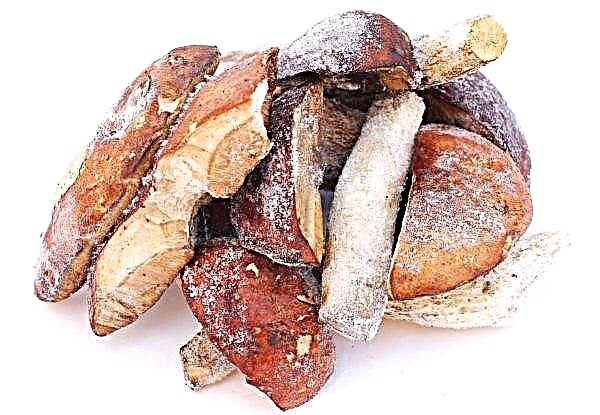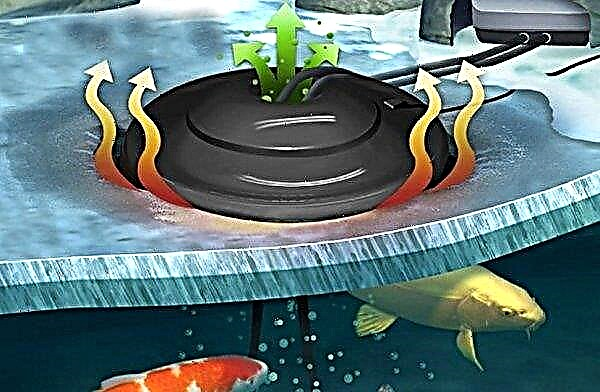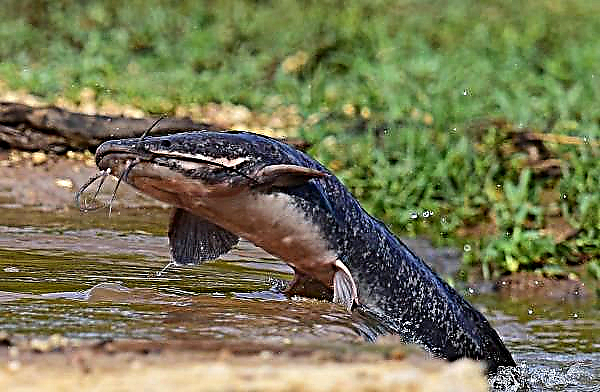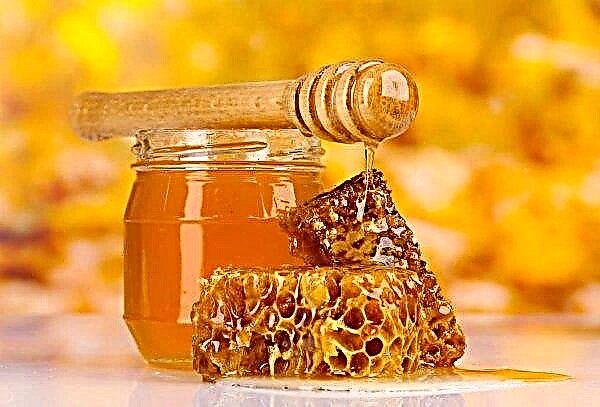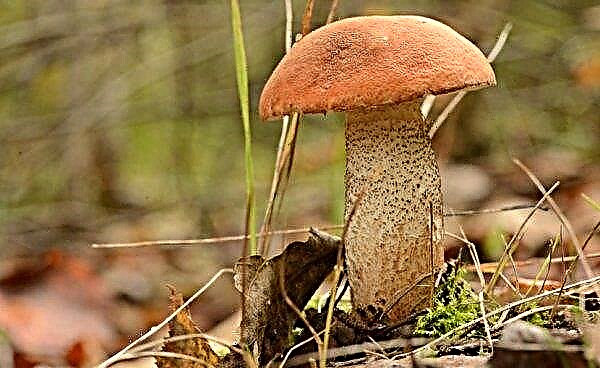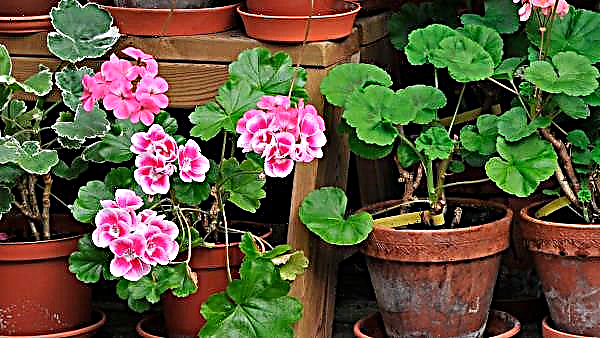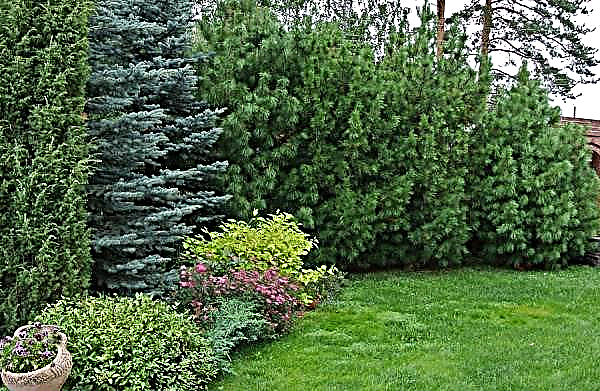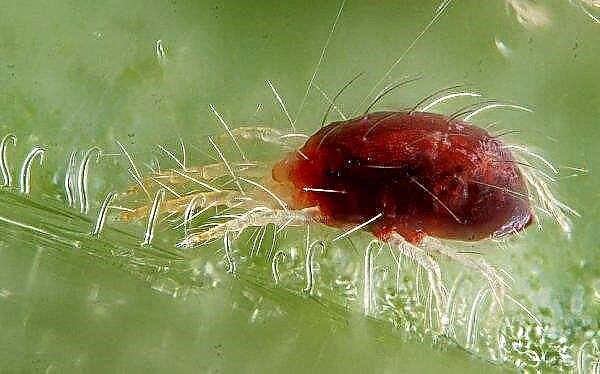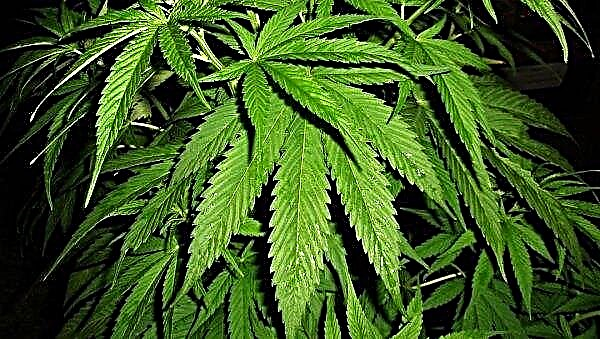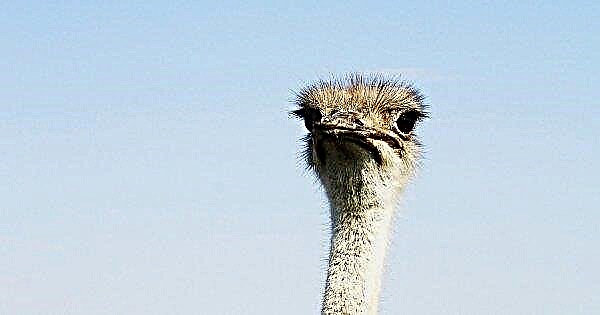The breed of insects in beekeeping plays no less role than the pedigree characteristics of farm animals, so every beekeeper tries to acquire only the most productive and least demanding bees. The well-known Burzyan bee also belongs to the most popular breeds of these insects, and what exactly it is remarkable for, how best to build care and what productivity indicators should be expected in this case - read more about this.
The origin of the Burzyansky breed of bees
Until about the 50s of the last century, honeycombs were completely removed from the sides, and although the bees died in the winter, the honeycombs were renewed and the side did not rot. In the future, families of wild bees could settle in it, but in home breeding, this option was not always very practical. Since the 60s, Bashkir beekeepers have changed their approach to keeping and breeding honey insects, starting to settle them in traditional hives. However, traditional stewardship in the forests has survived to this day, so in the hollows of the old trees of Bashkiria today you can find quite healthy and productive bee families, the existence of which directly depends on the availability of a sufficient number of honey plants in the region. It was in the wild that the formation of the Burzyan breed began, whose representatives descended from the dark forest bees found in the wild Bashkir forests.
However, traditional stewardship in the forests has survived to this day, so in the hollows of the old trees of Bashkiria today you can find quite healthy and productive bee families, the existence of which directly depends on the availability of a sufficient number of honey plants in the region. It was in the wild that the formation of the Burzyan breed began, whose representatives descended from the dark forest bees found in the wild Bashkir forests.
Did you know? The beekeepers were engaged in flight support even in the time of the development of Ancient Russia, and in those days, the hollow of a tree was called a bead. It turns out that this word has been in use for more than a century.
Appearance
Unlike other representatives of the species, Burzyan bees do not have a pronounced yellowish color, and the surface of their body is rather dark blue. As for the size, the representatives of this breed can be safely attributed to large insects, since the mass of one bee varies within 100 mg, with a load of honey goiter 74–87 mg. The length of the proboscis of the insect is 6–10 mm. Today, Burzyan bees are bred mainly by artificial means, growing young families in special on-board hives. However, their population has not yet reached the desired level, therefore, the described bees are listed in the Red Book, in particular due to the high taste qualities of honey (a lot of medicinal plants grow in the Bashkir territory, including linden).
Today, Burzyan bees are bred mainly by artificial means, growing young families in special on-board hives. However, their population has not yet reached the desired level, therefore, the described bees are listed in the Red Book, in particular due to the high taste qualities of honey (a lot of medicinal plants grow in the Bashkir territory, including linden).
Distinctive features and general characteristics
Distinctive characteristics of the breed can be traced not only in the appearance of Burzyan bees, but also in their behavior and even the characteristics of honey collection, therefore, when planning to breed these insects, it is worth considering these characteristics.
Did you know? DTo get just one tablespoon of honey, 200 bees must work for a whole day. And one average bee family (usually consists of 50-100 thousand individuals) brings about 10 kg of honey to the beekeeper per day.
Behavior features
The maximum activity of the described insects is observed in a clear and fine daytime, when the air temperature in the street does not fall below + 7 ° C. At lower rates, insects prefer not to leave the hives, which means that the beginning of the period of honey collection can be delayed. Burzyan bees do not differ in good disposition, therefore, even when fumigating beehives, you need to be as careful as possible to avoid being bitten. It is extremely dangerous to take care of an apiary without special protective suits, as angry insects usually attack with their families. Working individuals are strongly attached to the uterus, so when it is changed, problems within the family are possible. Two female individuals in one hive are unacceptable, which excites the rest of its members.
Burzyan bees do not differ in good disposition, therefore, even when fumigating beehives, you need to be as careful as possible to avoid being bitten. It is extremely dangerous to take care of an apiary without special protective suits, as angry insects usually attack with their families. Working individuals are strongly attached to the uterus, so when it is changed, problems within the family are possible. Two female individuals in one hive are unacceptable, which excites the rest of its members.
Honey Harvest Features
Bashkir bead bees are characterized by high productivity and hard work, therefore, under optimal conditions can bring a considerable amount of honey. However, a great role in this matter is played by weather features: foreseeing rain and bad weather the whole family quickly returns to the hives, where it stays until the end of bad weather. The same applies to hot sultry days, although with a limited number of melliferous plants on the site, many of them are still taken for work until all the pollen is collected.
Important! In order to preserve the well-expressed pedigree qualities of the Burzyansk bee, it is worthwhile to prevent the possible hybridization of a new generation caused by the close distribution of wild relatives.
With a lack of honey collection, insects will do everything possible to harvest the maximum amount of honey, for which this breed is valued among beekeepers. Burzyan bees get used to honey plants quickly, but they look for other sources of pollen slowly and sluggishly, not showing much enthusiasm for new honey plants. At a familiar gathering place, insect productivity always rises, but if you move the hives to a new territory, you should not expect high rates at first. Buckwheat and linden are among the most favorite honey plants of Bashkir bees, therefore, if these plants grow in the place of breeding of bee families, then working individuals can work non-stop for 16 hours a day
Buckwheat and linden are among the most favorite honey plants of Bashkir bees, therefore, if these plants grow in the place of breeding of bee families, then working individuals can work non-stop for 16 hours a day
Productivity indicators
Honeycombs in hives with Bashkir bees always look neat and attractive, with a minimum distance between zabrus and honey. The attribute of the southern breeds is a wet signet and a large amount of propolis. In favorable conditions, the content and with a sufficient number of honey plants in the nearby territory, the daily amount of brought nectar reaches 9-12 kg per family. The amount of honey relative to the bee bread, in this case, is correlated as 100: 1.
Important! At the first signs of a massive plague of bees, it is worth revising the plan for insect care, paying due attention to the microclimate inside the hives. If the temperature rises excessively or ventilation is inadequate, many insects may not survive such changes.
Breeding
Swarming of insects of the described breed usually begins in early June and stops only with the onset of the period of primary honey collection. During this period of time, the uterus lays 8-14 queen cells, which is quite enough to obtain a large number of new working individuals. Sometimes during the breeding of Burzyan bees there is a rapid “israeli” of families, with further death of the remaining individuals in the winter.
Advantages and disadvantages of Burzyan bees
Like other bee breeds, the Burzyansky variety has its own characteristic advantages and disadvantages, although the latter are much smaller.
- The list of positive characteristics of the described insects should first include:
- high winter hardiness (retain activity when lowering temperature indicators to -45 ... -50 ° C);
- excellent productive qualities of the uterus (one individual can lay up to 2500 eggs per day, not to mention the large amount of wax left);
- hard work;
- accurate and careful attitude to the bribe, due to which the obtained honey products are not only tasty and healthy, but also very attractive in appearance, with high commodity characteristics;
- the ability to collect pollen from a large area of melliferous stands.
- As for the weaknesses of Bashkir bees, first of all it is:
- the mandatory use of protective suits when working in an apiary, and not always enough simple shelter of the head;
- the complexity of replacing the uterus, which becomes a problem if there is a wild or old "queen" in the hive;
- the difficulty of strengthening bee colonies in winter (two uterus cannot get along in one hive);
- high rates of loyalty, which is why it is difficult to return insects to working mode;
- the tendency of bees to “lie” in the deep layers of the hive, which is why insects are difficult to get when moving to another home or performing other care measures.
Home breeding tips
When keeping Bashkir bees, they are raised using standard hives (the traditional method of breeding), and using sides - hollow of empty trees or specially created structures that resemble them in structure. The latter case is more popular with respect to the described insects, but in order to achieve the maximum efficiency of beekeeping, the site for placing the sides should be located on the territory of a mixed coniferous-leaf forest with a large number of honey plants.
Making boards (takes only a few days) for successful breeding of bees involves the following sequential steps:
- Having prepared the required number of round wooden bars (resembling a tree trunk), the middle is removed from them and cleaned to get a small depression, which later serves as a home for bees.
- To attract insects to such a hive, lubricate the inner surface of the obtained product with a thin layer of wax.
- Create guides along which the bees will organize their honeycombs.
- Nail the bars slightly below the lid, and then tie the bead with wire.
- When breeding insects in regions with significant temperature drops in the winter, it is worth additionally insulating the structure with moss.
 To prevent the bees from overlooking due to the non-separable design of the sides, they are sawn, leaving a circle for collecting honey on top. It is desirable that all sides be spacious and large, which greatly reduces the likelihood of swarming insects. Small houses for bees are only relevant for strengthening bee families, especially in areas where Burzyan bees are protected by law and work is being done to artificially increase their population.
To prevent the bees from overlooking due to the non-separable design of the sides, they are sawn, leaving a circle for collecting honey on top. It is desirable that all sides be spacious and large, which greatly reduces the likelihood of swarming insects. Small houses for bees are only relevant for strengthening bee families, especially in areas where Burzyan bees are protected by law and work is being done to artificially increase their population.Breeding Bashkir bees requires certain skills in beekeeping, so beginners in this matter often encounter certain difficulties. However, having a certain perseverance and making enough efforts to build hives and further care for the described insects, you have every chance to achieve maximum productivity from them, expressed in a large amount of tasty and healthy honey.

